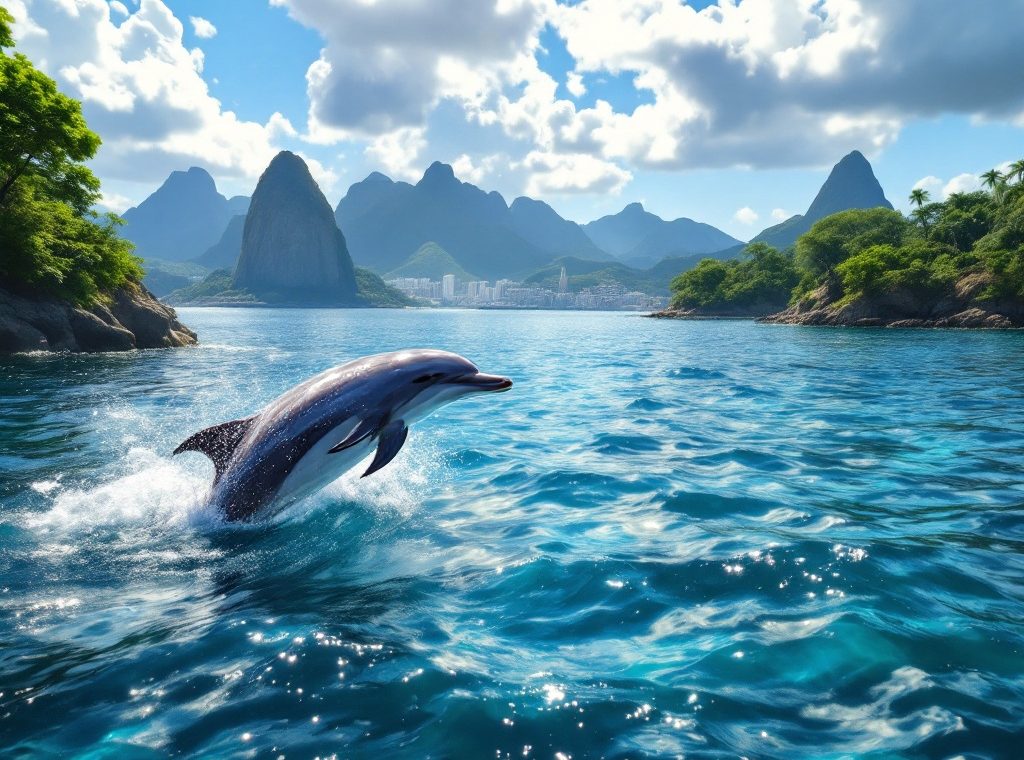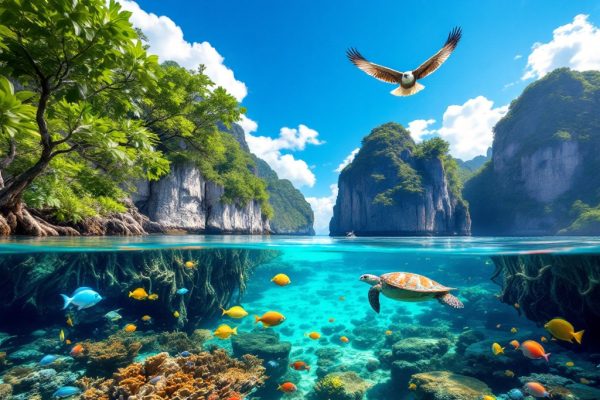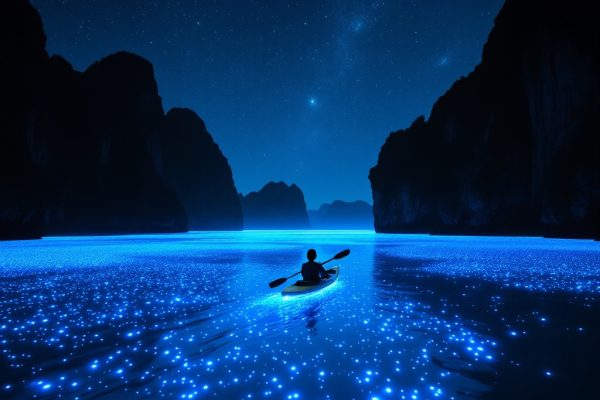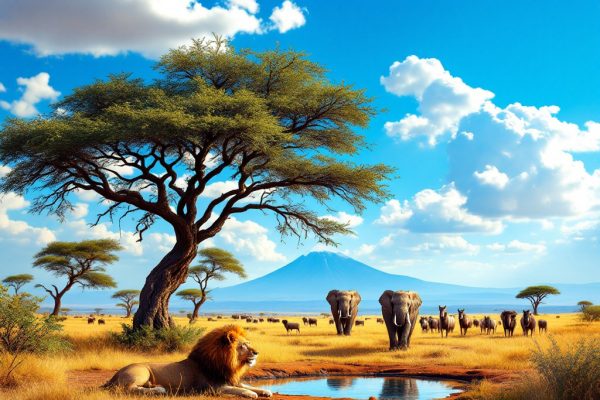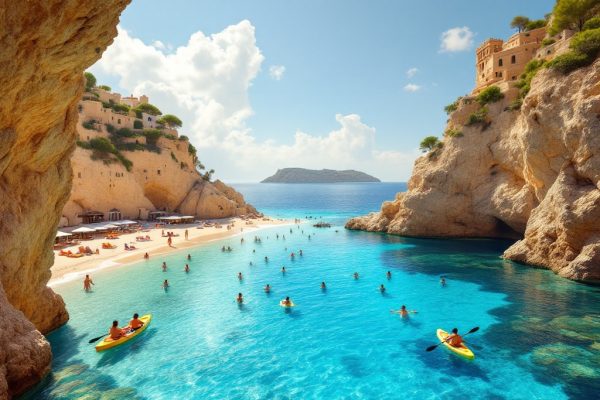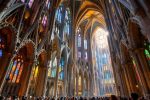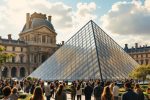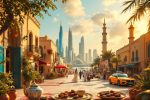Why Is Guanabara Bay a Natural Wonder of Brazil
Discover Guanabara Bay, the world’s largest bay by volume, a breathtaking natural wonder in Brazil. Framed by iconic Sugarloaf and Corcovado Mountains, this vibrant ecosystem teems with diverse marine life, including the endangered boto dolphin. Explore lush islands, stunning coastal scenery, and rich cultural landmarks. However, pollution and human development threaten this vital habitat. Learn more about the bay’s unique features, ecological significance, and the ongoing efforts to protect this natural treasure for future generations.
Important information
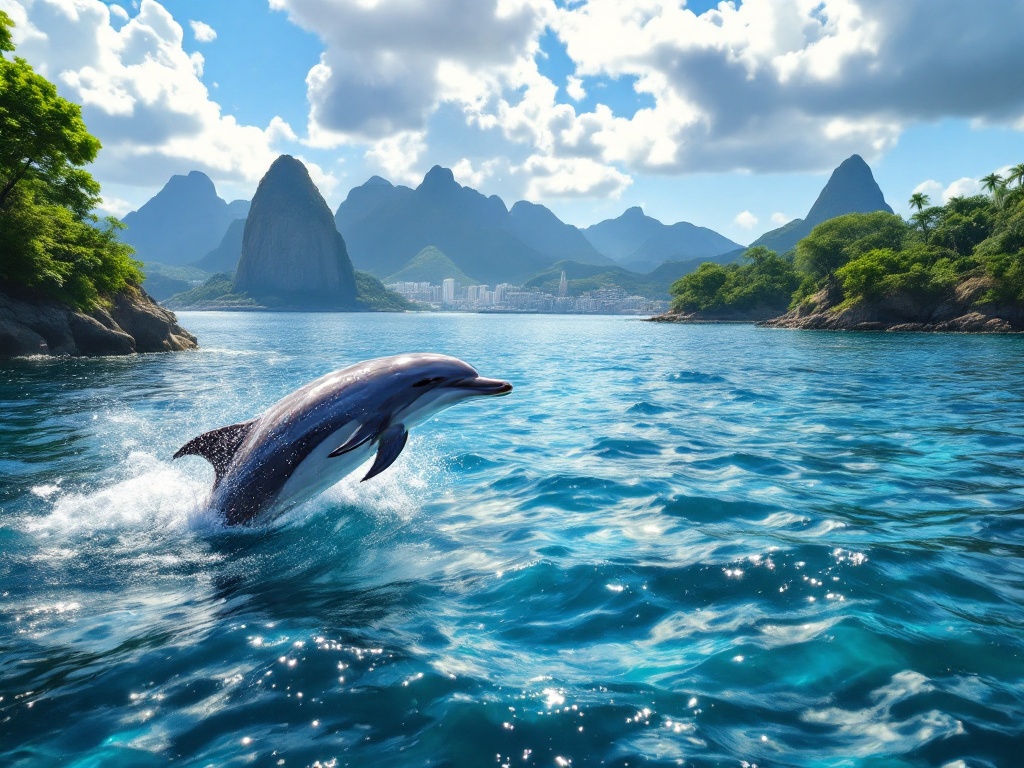
- Guanabara Bay is the world’s largest bay by volume, encircled by iconic mountains like Sugarloaf and Corcovado.
- The bay features diverse islands: Governador (undergoing ecological restoration), Paquetá (car-free and tourist-friendly), Cobras (Brazilian Navy base), and Fiscal (historical landmark).
- It’s a rias estuary, formed by rising sea levels flooding a river valley, creating a unique coastline.
- A rich ecosystem supporting diverse marine life, including the endangered boto dolphin, is threatened by pollution and development.
- Untreated sewage and industrial waste contribute to a significant pollution crisis, impacting the bay’s biodiversity and overall health.
Guanabara Bay: A Natural Wonder of Brazil
Guanabara Bay is a natural wonder, captivating visitors worldwide with its stunning scenery. Dramatic mountains and lush forests frame the bay, teeming with diverse marine life. Its unique geography, defined by a deep inlet and numerous islands, enhances both its beauty and ecological significance. The islands provide vital habitats, while the inlet allows for deep-water navigation. Despite facing environmental challenges, the bay’s remarkable beauty endures, continuing to attract nature enthusiasts globally.
What Makes Guanabara Bay a Unique Natural Wonder?
Guanabara Bay, the world’s largest bay by volume, is surrounded by dramatic mountains and lush islands, creating a breathtaking panorama. Its clear waters reflect the stunning scenery, further enhanced by significant cultural landmarks along its shores. This combination of natural beauty and cultural significance makes Guanabara Bay a true natural wonder.
Stunning Natural Beauty and Landscape
Guanabara Bay’s striking beauty captivates visitors worldwide, especially nature lovers. Sugarloaf and Corcovado Mountains dominate the scene, their majestic peaks rising dramatically from the water to create a breathtaking panorama.
Surrounding Dramatic Mountains
Guanabara Bay is encircled by stunning mountains, with iconic peaks like Sugarloaf and Corcovado dominating the horizon. The Serra do Mar range further enhances this vista, creating a truly spectacular scene. Steep slopes, covered in lush greenery, descend dramatically to meet the bay’s edge, adding to the area’s natural beauty.
Geographical Features of Guanabara Bay
Guanabara Bay is the world’s largest bay by volume, boasting a massive 143-kilometer perimeter. Its deep waters are framed by iconic landmarks like Sugarloaf Mountain and Corcovado Peak. The bay’s intricate coastline is punctuated by numerous coves, inlets, and islands, such as Governador, Paquetá, Cobras, and Fiscal Island, all contributing to its vast 414 square kilometer expanse.
Rias-type Estuary and Coastal Scenery
Guanabara Bay, a rias estuary, formed as rising sea levels inundated a river valley, sculpting a distinctive coastline of submerged valleys and prominent headlands. The bay’s diverse scenery encompasses rocky shores, sandy beaches, and lush mangrove forests.
Islands within the Bay: Governador, Paquetá, Cobras, and Fiscal
Governador Island, once a landfill, is now focused on ecological restoration.
Cobras Island houses a Brazilian Navy facility.
Paquetá Island attracts tourists with its car-free environment and beautiful beaches.
Fiscal Island, a historical landmark, is known for its former customs post.
Ecological Significance and Environmental Challenges
Guanabara Bay is a vibrant ecosystem teeming with fish, birds, and diverse marine life. However, human activity and pollution pose significant threats to this vital habitat, leading to a decline in water quality and biodiversity and presenting a serious environmental challenge.
Biodiversity and Marine Life
Guanabara Bay boasts a rich ecosystem, supporting diverse species like the critically endangered boto dolphin. Fish, crustaceans, and aquatic plants also call these waters home. However, this biodiversity is under threat from pollution and human development. Preservation is crucial, not only for ecological balance, but also for the local economies that rely on the bay. Protecting this vital resource is an investment in our future, a legacy for generations to come.
Impact of Human Development and Pollution
Guanabara Bay faces a critical pollution crisis. Untreated sewage and industrial waste severely damage marine life and ecosystems. Coastal development and deforestation worsen the situation, causing habitat loss and increased sedimentation, which further harms the bay’s environment and diminishes its ecological health and natural beauty.

